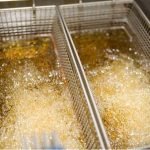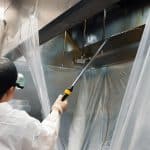Fire Safety Restaurants: 5 Things Owners Must Know
Fire safety in restaurants isn’t just a legal requirement; it’s an essential part of operational management. By focusing on fire safety, owners can safeguard their assets, ensure employee well-being, and maintain customer trust. Understanding the key components of a solid fire safety strategy can make a significant difference in preventing devastating incidents.
Fire safety is not merely about compliance; it’s a critical aspect of running a successful restaurant. The implications of neglecting fire safety can be far-reaching, impacting not just the physical property but also the livelihood of the staff and the safety of the customers. By implementing robust fire safety measures, restaurant owners can cultivate a culture of safety that enhances their reputation and boosts employee morale.
The statistics surrounding restaurant fires are alarming. For instance, in a recent report by the National Fire Protection Association, it was found that restaurant fires lead to thousands of injuries and millions of dollars in property damage each year. This emphasizes the need for proactive measures in fire safety management.
Why Fire Safety Restaurants Are a Priority
Regular maintenance of kitchen hoods and exhaust systems should include not only cleaning but also a comprehensive inspection of filters and fans. Establish a schedule for these checks and document them to provide proof of compliance if needed. This systematic approach not only prevents grease buildup but also maximizes the efficiency of your kitchen ventilation system.
Incorporating a thorough waste management strategy is vital. Ensure that all staff are trained in how to dispose of grease and oil properly. Consider placing designated bins for waste and conducting regular checks to prevent overflow, which can lead to hazardous conditions and potential fire risks.
Consider hosting an annual safety day, which can include workshops on fire safety, hands-on training with fire extinguishers, and demonstrations of emergency procedures. This not only reinforces safety protocols but also builds teamwork and camaraderie among staff.
Consider the high-profile restaurant fires that have captured media attention over the years. These incidents serve as stark reminders of the potential dangers lurking in kitchens that are not adequately prepared. The emotional toll on employees and the community can be profound. Therefore, establishing a comprehensive fire safety plan is not just an option; it’s an obligation for every restaurant owner.
When it comes to running a commercial kitchen, fire safety restaurants should always be top of mind. According to the National Fire Protection Association (NFPA), nearly 60% of restaurant fires originate in cooking equipment. By prioritizing fire safety restaurants, owners can avoid costly damage, protect staff, and maintain a safe dining environment.
Regular maintenance of the kitchen hood and exhaust system involves more than just cleaning; it encompasses a thorough inspection of all components, including filters, fans, and ducts. Each part must be assessed for wear and tear, and any signs of damage should be addressed immediately to prevent any risk of fire. Additionally, keeping a log of maintenance activities can help ensure compliance with local regulations and insurance requirements.
Furthermore, grease management goes beyond disposal; it is essential to create a comprehensive grease management plan. This includes regular training for staff on how to properly dispose of grease and oil, implementing a schedule for cleaning grease traps, and using technology like grease interceptors to reduce the amount of grease entering the drainage system. These proactive measures not only enhance fire safety but also contribute to the overall hygiene of the restaurant.
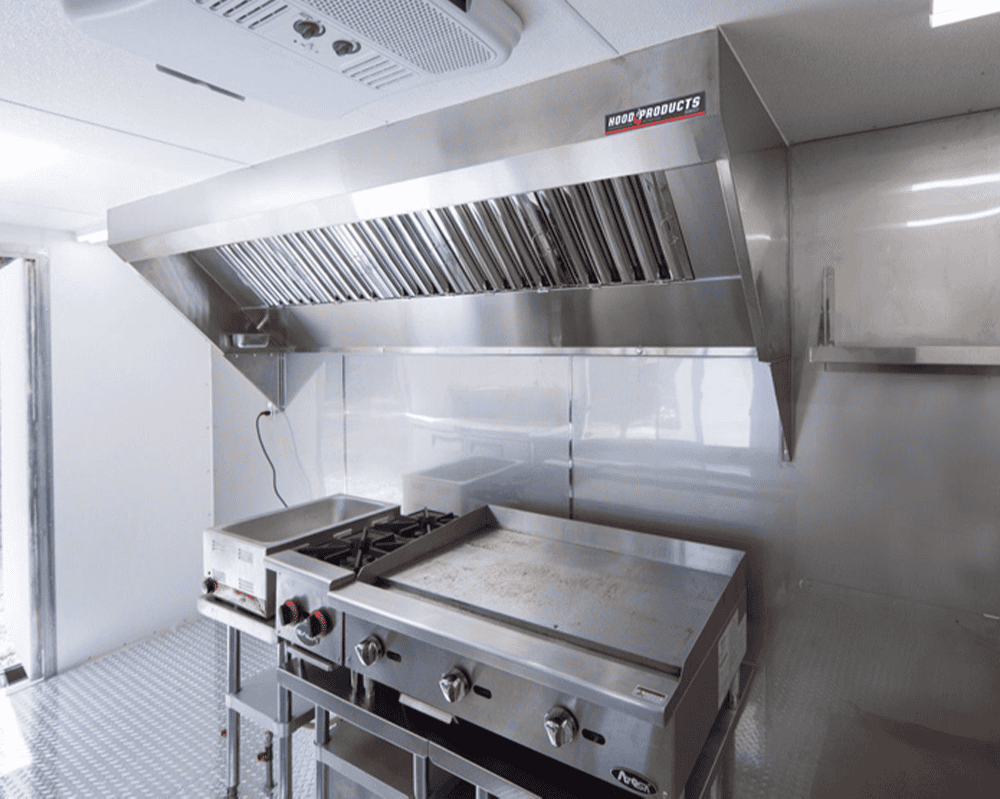
Additionally, incorporating technology can enhance your fire safety strategy. For instance, consider installing a smart fire alarm system that integrates with your restaurant’s existing security and monitoring systems. These advanced systems can provide real-time alerts and data analytics, helping you identify potential hazards before they escalate into a fire.
1. Kitchen Hood and Exhaust System Maintenance
The most important aspect of fire safety restaurants is maintaining the kitchen hood and exhaust system. Without regular cleaning, grease builds up inside ducts, turning them into fire hazards.
Educating your staff on fire safety protocols should be an ongoing process. Consider creating a fire safety manual that outlines procedures, including detailed instructions on using different types of fire extinguishers based on the class of fire. Conducting regular fire drills is also crucial. These drills reinforce the importance of staying calm during emergencies and ensure that employees know the quickest evacuation routes.
Training staff for fire emergencies should include practical simulations. For instance, regular fire drills can help familiarize employees with evacuation routes and procedures. Incorporate scenarios that require teamwork and quick decision-making, so employees feel prepared in real situations.
At TruShine Services, we specialize in hood cleaning that eliminates fire risks and keeps your restaurant compliant with NFPA 96 standards. A routine cleaning every 3–6 months is a must for effective fire safety restaurants.
2. Grease and Oil Management in Fire Safety Restaurants
Grease and cooking oil are major contributors to restaurant fires. Proper disposal and management are critical for maintaining fire safety restaurants. Owners should:
- Store oil in sealed, approved containers.
- Clean fryers frequently.
- Empty grease traps regularly.
Fryer filtration systems also play an important role in reducing hazards and keeping fire safety restaurants running smoothly.
3. Staff Fire Safety Training for Restaurants
Even the best fire suppression systems can’t replace well-trained employees. Staff training is essential for fire safety restaurants. Teams should know how to:
In addition to automatic fire suppression systems, consider investing in fire detection technologies that provide real-time alerts. These systems can notify you and emergency services immediately, reducing response time and potentially saving lives and property.

- Use fire extinguishers correctly.
- Shut off gas and electrical supplies during emergencies.
- Follow an evacuation plan quickly and safely.
For guidelines, reference the OSHA fire safety standards to build a solid training program for your restaurant.
4. Fire Suppression Systems for Restaurants
Automatic fire suppression systems are a cornerstone of fire safety restaurants. These systems detect high heat levels and release extinguishing agents directly over cooking equipment.
Moreover, understanding the different types of fire suppression systems available can help you make informed decisions tailored to your restaurant’s specific needs. For instance, wet chemical systems are particularly effective for kitchens that use cooking oils, while dry chemical systems might be more suitable for other areas. Consulting with fire safety experts during the system selection process is always advisable.
Restaurant owners should:
Regular compliance checks should be an essential part of your fire safety plan. Partner with certified professionals who can conduct thorough inspections and provide you with actionable recommendations. Additionally, keeping abreast of changing fire safety regulations will help ensure that your restaurant remains compliant.
- Inspect suppression systems twice per year.
- Test fire extinguishers monthly.
- Keep backup systems on-site.
These proactive steps ensure fire safety restaurants are always ready to prevent small fires from becoming disasters.
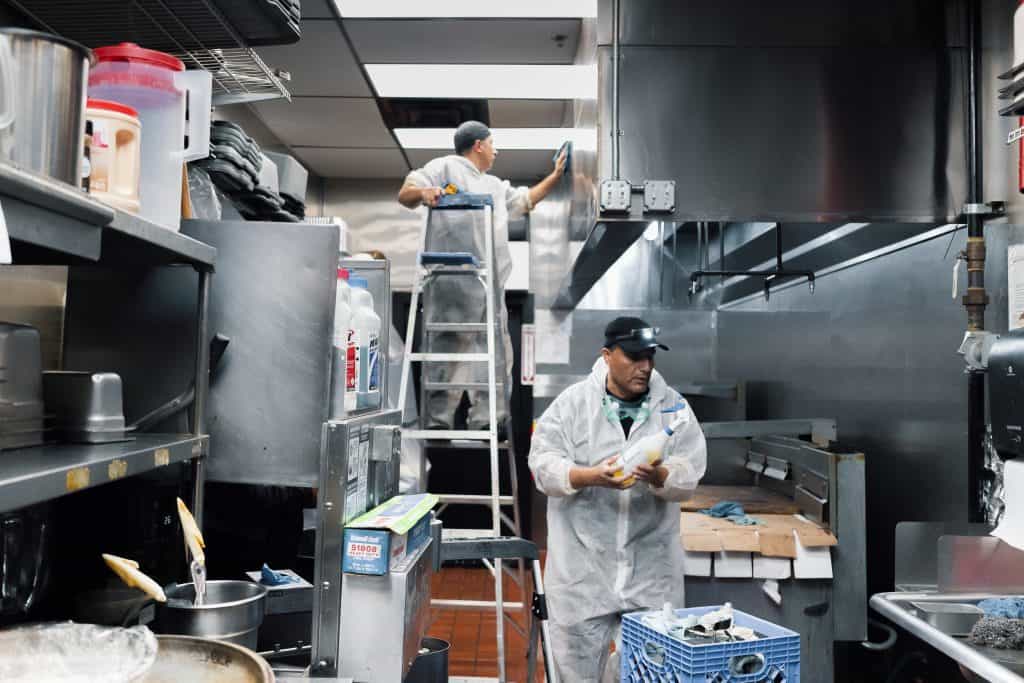
5. Regular Inspections and Compliance in Fire Safety Restaurants
Compliance isn’t just a box to check—it’s the backbone of fire safety restaurants. Regular inspections ensure:
Creating a culture of safety is vital. Encourage employees to speak up about potential fire hazards and to be proactive in addressing them. Recognition programs for safe practices can further motivate staff to commit to fire safety protocols.
- NFPA 96 compliance.
- Proper equipment maintenance.
- Lower insurance risks.
Moreover, engaging with local fire authorities can provide additional insights into compliance and fire safety practices tailored to your area. Building a network with other restaurant owners can also facilitate the exchange of knowledge and experiences related to fire safety. Consider participating in local restaurant associations that often provide resources and training opportunities.
Working with a professional cleaning and inspection service like TruShine Services helps guarantee your restaurant remains compliant and safe.
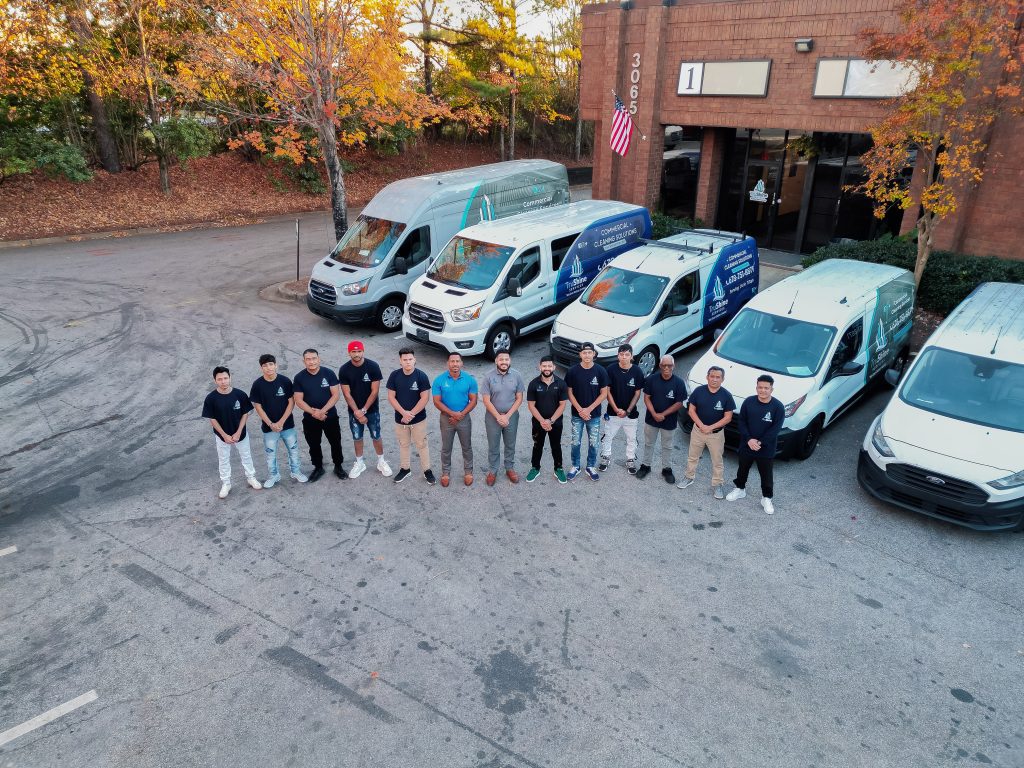
Regular audits of your fire safety protocols can help identify areas for improvement. Schedule these audits at least once a year, and involve staff members in the process. Gather feedback from your team about potential hazards they may have noticed or suggestions for better emergency preparedness. This collaborative approach not only enhances safety but also fosters a sense of responsibility among your staff.
Now Serving More Locations
TruShine Services is growing to serve you better! 🚀 We’re excited to bring our certified hood cleaning and NFPA 96 compliance services to new locations across South Carolina, North Carolina, and Conyers, Georgia.
📞 Contact us today to schedule service at any of our locations and protect your business with certified fire safety and compliance.

